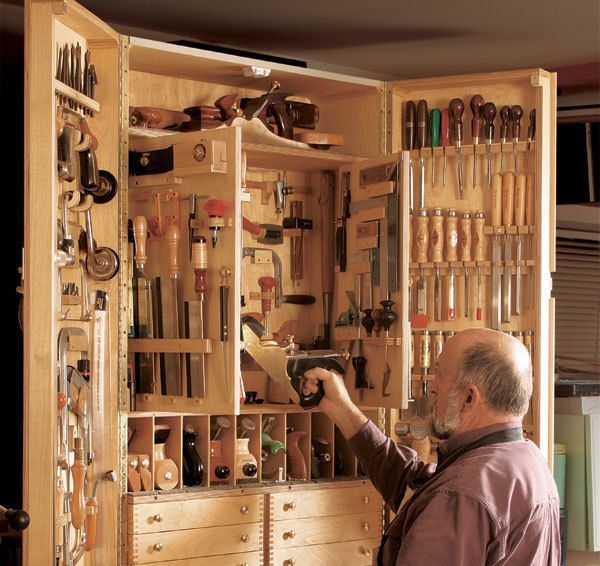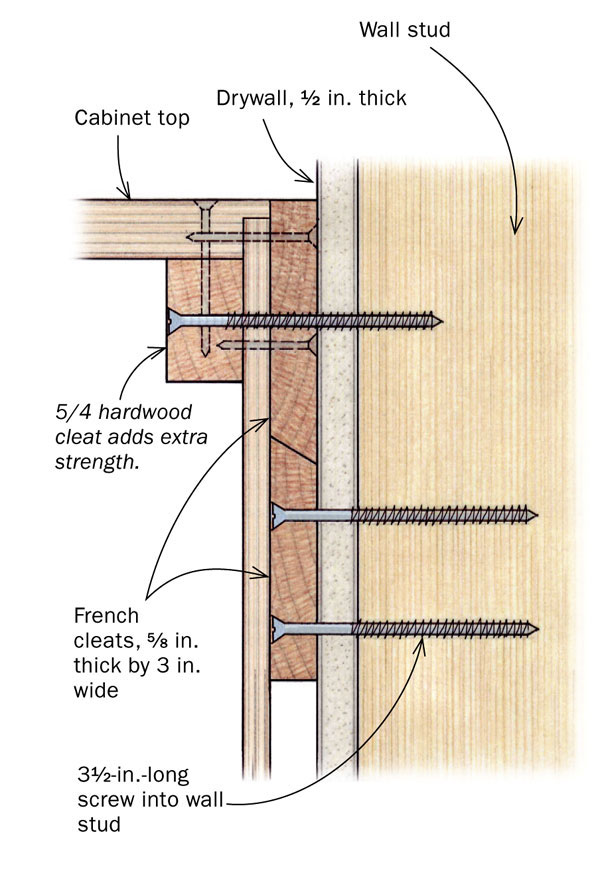
Q:
Jan Zoltowski’s tool cabinet (FWW #188, pp. 40-45) is impressive, but its sheer size raises a question often overlooked in articles featuring wall-mounted cabinets. How do you properly secure something that must weigh over 300 lb. when filled with tools? The article shows the cabinet secured to the wall with French cleats, with at best four screws on each cleat that is mounted to the wall. What size are the screws, and why not use lag screws for something this heavy?
Skip Kunst, Cincinnati, OH
A:
I’ve been in the cabinet business for 36 years and I’ve never heard of a cabinet falling off a wood stud wall as the result of screw failure.
But I have seen cabinets fall because of their own poor construction, leaving their backs still on the wall.
The screw size depends on the weight the cabinets will carry. Typically, kitchen cabinets are hung with 3-1/2-in. drywall screws, but to be conservative I use 3-1/2-in. #10s. Lag screws are overkill. Two-thirds of the screw should penetrate the stud.
In my opinion, Mr. Zoltowski’s cabinet-mounting system is strong enough. But for extra strength, you might add an internal cleat, then screw through it into the wall studs.
A strong connection. To secure a heavy cabinet to a wall, screw a hardwood cleat inside its top corner. Then drive 3 1/2-in. #10 screws through the cleat and into the wall studs.
Fine Woodworking Recommended Products

WoodRiver Router Bit Storage Case

Woodriver Rechargeable Desiccant Bag
























Comments
Love it!! I just finished mine..The only thing I changed was the number of drawers.. I made 4 not 6.. I like the deeper size.. Looks great!!
Why do so many instructions on hanging cabinets assume that there are wall studs? Many older homes and garages were built of brick. The walls are plaster on brick - no studs. In the first home I DIY renovated, the plaster was 1-1/2" thick requiring that I dig out horizontal channels and secure 2x4s to the brick to attach the kitchen cabinets (still secure since 1976). Many past renovators merely secured sheetrock to the old plaster. Using long screws or even lag bolts through the drywall or old plaster, IMO, is not secure since neither the drywall nor the plaster will keep the screws from bending regardless of how deep into the brick one drills, especially if, instead of brick, one hits mortar.
Log in or create an account to post a comment.
Sign up Log in